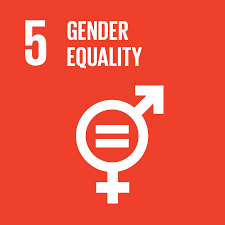 |
Diversity and inclusion is critical to our future success. In today’s globalised business environment, diverse teams are proven to be more productive and better equipped to succeed. Diversity is about welcoming and valuing employees of every background. |
We are committed to providing equal opportunities to everyone, regardless of gender, race, disability, ethnicity, sexual orientation, age or any other difference.
Diversity and inclusion is critical to our success. Diverse businesses gain greater access to talent, learn from a wider range of perspectives and are proven to be more profitable.
We want employees of every background to feel welcome and valued. Our aim is to provide equal opportunities to everyone, regardless of gender, race, ethnicity, disability, sexual orientation, age or other differences. Discrimination of any kind will not be tolerated.
We will achieve 33% female representation on our Board and in our senior leadership by 2025.
Given our 2017 merger and subsequent listing on the FTSE 250, we adopted a 2025 deadline, rather than 2020 as recommended by the Hampton-Alexander Review, since we also needed to embed a new corporate culture.

We are committed to building gender diversity and are working to accelerate progress. Led by Executive Management and a new global steering committee, we are embedding diversity throughout our business.
To develop our pipeline of female leaders, we are reaching deeper into the organisation to identify future leaders and address potential obstacles to women’s career development. For example, our 2020 Leadership Conference for our top 60 global leaders included 10 high-achieving female middle managers who had been personally invited by our CEO. Other new measures include a requirement for at least one woman to be shortlisted among the final three candidates for all global roles, from apprentices to senior leadership. We are also exploring anonymised recruiting processes to reduce unconscious bias.
Our new female employee network is helping us understand the potential barriers experienced by women in our workplace. A survey of more than 200 participants found that while most female employees felt equally treated, they occasionally encountered gender stereotypes and other obstacles. Survey results also confirmed the issues we must address: the need for greater understanding of diversity, more flexible working and the promotion of parental leave for both men and women.
While female representation continues to grow, gender diversity in senior leadership lags behind our ambition, although there was a 5% improvement over 2018. While women accounted for 22% of our Executive Management Team in 2019, the figure falls to 17% when direct reports are included.
|
Proportion of Women |
2018 |
2019 |
2025 Target |
|
Board |
8% |
23% |
33% |
|
EMT |
22% |
22% |
33% |
|
Direct Reports |
10% |
16% |
33% |
|
EMT + Direct Reports |
12% |
17% |
33% |
In addition to gender diversity, we must ensure that our leadership reflects the markets we serve. Our business spans countries, our workforce includes over nationalities and we serve customers in 125 countries. Our first priority is therefore to ensure that each key geographic region is represented in senior leadership. One example is our international rotation programme for high-performing employees from China, given the strategic importance of the country to our business.
We also aim to open our up workforce and leadership to a greater range of ages. Our initial programmes include a new apprenticeship scheme for 16-year-olds and relationship-building with educational institutions.